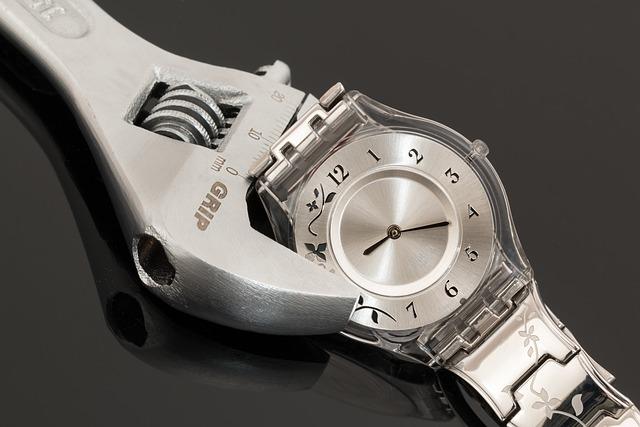Acceleration Sprints: Enhance Your Speed with Acceleration Sprint Workouts!

If you’re looking to take your speed to the next level, look no further than acceleration sprints. These high-intensity workouts are the secret weapon for enhancing your overall speed and boosting your athletic performance. Whether you’re an aspiring sprinter or simply want to outpace your competitors on the field, incorporating acceleration sprints into your training regimen is a game-changer. In this article, we’ll dive deep into the world of acceleration sprints, exploring the benefits, techniques, and key exercises that will help you power through the finish line with unmatched velocity. Get ready to unlock your full speed potential and leave your competitors in the dust!
Contents
- 1. Unlock Your Speed Potential: The Science Behind Acceleration Sprints
- 2. Boost Your Explosiveness: Key Tips for Improving Acceleration Sprint Performance
- 3. Warm-Up Rituals: Preparing Your Body for Acceleration Sprint Workouts
- 4. Tailored Training Plans: Designing Effective Acceleration Sprint Workouts
- Acceleration Sprints: Enhance Your Speed with Acceleration Sprint Workouts!
- 5. Mastering Technique: Proper Form and Mechanics for Maximum Speed
- 6. Power Training and Plyometrics: Building Strength for Acceleration Sprints
- 7. Shorter Distances, Greater Gains: How Speed Endurance Drills Enhance Acceleration
- 8. Fine-Tuning Your Nutrition: Eating for Optimal Performance in Acceleration Sprints
- 9. Injury Prevention: Strengthening Key Muscles to Avoid Common Injuries
- 10. Integrating Recovery: Rest and Rehabilitation for Enhanced Speed and Sprint Performance
1. Unlock Your Speed Potential: The Science Behind Acceleration Sprints
Unlocking your speed potential is a goal that many athletes strive for, and incorporating acceleration sprints into your training routine can help you achieve just that. Acceleration sprints are a type of running exercise that focus on building explosive power and speed, particularly in short bursts. By engaging your fast-twitch muscle fibers, these workouts can enhance your ability to accelerate quickly, ultimately improving your overall speed.
The science behind acceleration sprints lies in the principles of biomechanics and neuromuscular coordination. When you perform an acceleration sprint, your body undergoes a series of biomechanical changes that optimize your running efficiency. These changes include a more forward-leaning body position, increased stride length, and a higher knee drive, all of which result in a more powerful and efficient running motion.
To get the most out of your acceleration sprint workouts, it’s important to focus on proper technique and form. Some key tips to keep in mind include:
- Engage your core muscles to maintain a stable and balanced posture throughout the sprint.
- Drive your knees up and maintain a high knee lift to maximize your stride length.
- Generate power from your glutes and hamstrings by forcefully extending your legs with each stride.
- Focus on quick ground contact to minimize the time spent on each step and increase your speed.
By incorporating acceleration sprint workouts into your training routine, you can unlock your speed potential and take your athletic performance to the next level. With consistent practice and a focus on proper form, you’ll be amazed at the improvement in your speed and acceleration abilities.
2. Boost Your Explosiveness: Key Tips for Improving Acceleration Sprint Performance
To improve your sprint performance and boost your explosiveness, incorporating acceleration sprint workouts into your training routine is essential. Acceleration sprints focus on increasing your speed and power during the initial phase of a sprint, allowing you to cover short distances with maximum velocity. Here are some key tips to help you enhance your acceleration sprint performance:
1. Technique is everything: Proper sprinting technique plays a crucial role in improving acceleration. Focus on driving your knees forward, keeping your upper body relaxed and straight, and driving your arms in a synchronized motion. Maintaining a forward lean and pushing off explosively from the balls of your feet will propel you forward with minimal energy loss.
2. Master the acceleration phase: The initial 20-30 meters of a sprint are crucial for building momentum and reaching your top speed quickly. Incorporate exercises that specifically target this phase, such as short explosive sprints, hill sprints, and sled pulls. These workouts will strengthen your muscles and develop the quick burst of power needed to accelerate rapidly.
3. Plyometric training for power: Plyometric exercises, such as box jumps, depth jumps, and hurdle hops, are highly effective in increasing lower body power and explosiveness. By incorporating these exercises into your workout routine, you will develop the ability to generate maximum force and power during each stride, leading to improved acceleration during sprints.
Remember, consistency and discipline are key when it comes to improving your acceleration sprint performance. Gradually increase the intensity and duration of your workouts while allowing ample time for recovery. With dedication and the right training methods, you’ll be able to enhance your speed and explosiveness, ultimately taking your sprint performance to new heights.
3. Warm-Up Rituals: Preparing Your Body for Acceleration Sprint Workouts
Once you’ve decided to incorporate acceleration sprints into your workout routine, it’s important to prepare your body properly with warm-up rituals. These rituals help prevent injuries, improve performance, and ensure that you get the most out of your acceleration sprint workouts. Here are some essential warm-up rituals to consider before diving into your sprints:
1. Dynamic Stretching: Start your warm-up with some dynamic stretching exercises. These movements not only loosen up your muscles but also improve your range of motion. Try incorporating leg swings, walking lunges, high knees, and butt kicks into your routine. Aim for 8-10 reps of each exercise.
2. Mobility Drills: Next, focus on mobility drills to activate the muscles and joints involved in acceleration sprints. Perform movements like hip circles, ankle rotations, and shoulder dislocations. These drills will enhance flexibility, coordination, and overall body control.
3. Activation Exercises: Before sprinting, it’s essential to activate specific muscles to ensure they are firing at their best. Incorporate exercises such as glute bridges, clamshells, and lateral band walks to activate your glutes, hips, and core muscles. Performing 2-3 sets of 10-15 reps for each exercise should be sufficient.
Remember, an effective warm-up routine sets the foundation for a successful acceleration sprint workout. Take the time to properly prepare your body, and you’ll see improved speed, performance, and results in no time!
| Dynamic Stretching Exercises | Mobility Drills | Activation Exercises |
|---|---|---|
| Leg Swings | Hip Circles | Glute Bridges |
| Walking Lunges | Ankle Rotations | Clamshells |
| High Knees | Shoulder Dislocations | Lateral Band Walks |
| Butt Kicks |
4. Tailored Training Plans: Designing Effective Acceleration Sprint Workouts
Acceleration Sprints: Enhance Your Speed with Acceleration Sprint Workouts!
In this post, we will delve into the world of acceleration sprint workouts and how they can help you enhance your speed on the track. Tailored training plans are essential when it comes to designing effective acceleration sprint workouts. These plans take into account your current fitness level and goals, allowing you to make progress at a pace that suits you. By incorporating the right exercises and techniques, you can maximize your acceleration and take your sprinting to new heights.
One key element of designing an effective acceleration sprint workout is utilizing proper running mechanics. By focusing on your form, you can optimize your stride length and cadence, ultimately improving your speed. Incorporating drills that target specific aspects of running mechanics, such as knee drive or arm swing, will help you refine your technique and enhance your overall sprint performance.
Another important aspect of acceleration sprint workouts is implementing strength training exercises. Building strength in your lower body, particularly in your glutes, hamstrings, and quads, will provide the power needed for explosive acceleration. Including exercises like squats, lunges, and plyometric jumps in your training plan will help you develop the necessary strength and explosiveness for faster starts and better acceleration.
| Benefits of Acceleration Sprint Workouts: |
|---|
| Improved acceleration and speed |
| Enhanced running mechanics |
| Increased lower body strength |
| Boosted explosive power |
In conclusion, tailoring your training plans to include effective acceleration sprint workouts can greatly enhance your speed and performance on the track. By focusing on proper running mechanics and incorporating strength training exercises, you can optimize your acceleration and take your sprinting abilities to the next level. So lace up your running shoes and get ready to unleash your full speed potential with these tailored workouts!
5. Mastering Technique: Proper Form and Mechanics for Maximum Speed
To truly enhance your speed and become a master in sprinting, it is crucial to pay attention to your technique and mechanics. Proper form not only helps prevent injuries, but it also allows you to maximize your speed potential. In this section, we will dive deep into the key elements of mastering technique and how to improve your form for maximum speed.
1. Posture: Maintaining a tall and upright posture is essential for optimal running mechanics. Avoid slouching or leaning forward, as this can lead to wasted energy and reduced efficiency. Imagine yourself being pulled up by a string attached to the top of your head.
2. Arm Swing: Your arms play a crucial role in generating power and balance while sprinting. Keep your arms relaxed, bent at around 90 degrees, and swing them back and forth in a controlled manner. Avoid crossing your arms across your body, as this can disrupt your balance.
3. Cadence: Strive for a quick and efficient turnover of your legs. Aim for around 180 steps per minute to ensure proper cadence. This will help you generate more power and maintain a faster pace.
4. Foot Strike: The way your foot makes contact with the ground can greatly impact your speed. Aim to land on the balls of your feet, rather than your heels, to maximize push-off power. Keep your foot strike light and quick, avoiding excessive heel striking or overstriding.
5. Core Strength: A strong core is vital for maintaining stability and transferring power during sprinting. Incorporate exercises like planks, Russian twists, and mountain climbers into your training routine to strengthen your core muscles.
Remember, mastering technique takes practice and patience. Focus on one element at a time and gradually incorporate them into your sprint workouts. By honing your form and mechanics, you’ll be on your way to reaching new levels of speed and performance.
6. Power Training and Plyometrics: Building Strength for Acceleration Sprints
Power Training and Plyometrics are essential components for building strength and enhancing speed in acceleration sprints. These dynamic exercises focus on explosiveness and quick muscle contractions, which are crucial for generating maximum power and propelling yourself forward with lightning-fast speed.
When it comes to power training, exercises like squats, deadlifts, and lunges are excellent for targeting the lower body muscles responsible for generating force. These compound movements engage multiple muscle groups simultaneously, helping to improve overall strength and power output. Performing these exercises with proper form and gradually increasing the weight load will gradually increase your muscle strength, giving you a stronger foundation for explosive sprints.
In addition to power training, incorporating plyometric exercises into your training routine can take your acceleration sprints to the next level. Plyometrics involve explosive movements that improve muscle elasticity and enhance the stretch reflex, allowing for greater force production and faster muscle contractions. Some effective plyometric exercises for speed development include box jumps, bounding drills, and depth jumps. These exercises not only improve lower body power but also work on coordination, agility, and balance, all of which are critical for accelerating quickly.
To get the most out of your power training and plyometric workouts, here are some tips to keep in mind:
– Gradually increase the intensity and difficulty of your exercises as your strength and performance improve.
– Ensure proper form and technique to minimize the risk of injury and maximize the effectiveness of each exercise.
– Include rest days in your training schedule to allow for adequate recovery and muscle growth.
– Warm up thoroughly before every workout to increase blood flow to the muscles and reduce the risk of sprains or strains.
– Incorporate proper nutrition and hydration into your training regimen to support muscle growth and recovery.
By incorporating power training and plyometrics into your training routine, you can build the strength and explosiveness needed to improve your acceleration sprints. Consistency and proper technique are key, so be patient and stay dedicated to your training. With time and effort, you’ll see significant improvements in your speed and performance on the track or field. So lace up your running shoes, get ready to push your limits, and prepare to excel in acceleration sprints!
7. Shorter Distances, Greater Gains: How Speed Endurance Drills Enhance Acceleration
Speed endurance drills are an essential component of an effective training program for athletes looking to enhance their acceleration. By incorporating shorter distances into your workouts, you can achieve greater gains in speed and agility. One of the most effective types of speed endurance drills is acceleration sprints.
Acceleration sprints focus on improving your ability to quickly accelerate from a stationary position. This type of workout is ideal for athletes participating in sports that require frequent bursts of speed, such as sprinting, football, and basketball. By consistently practicing acceleration sprints, you can enhance your explosive power and improve your overall performance on the field or court.
To perform an acceleration sprint, start by positioning yourself at a start line. Imagine that the line extends further behind you, allowing you to really explode off the line. Drive your arms and legs with maximum power, pushing off forcefully with each step. Maintain an upright posture and focus on driving your knees up to generate greater speed. Gradually increase the distance of your sprints as you progress, challenging yourself to push your limits and reach new levels of acceleration.
Incorporating acceleration sprints into your training routine can yield numerous benefits. Not only will you experience improvements in your acceleration, but you will also enhance your muscle strength, power, and overall athleticism. By consistently practicing these drills and pushing yourself to achieve faster sprint times, you can take your speed to new heights and gain a competitive edge in your sport. So lace up your athletic shoes, find a suitable stretch of flat ground, and get ready to sprint your way to greater speed and agility!
8. Fine-Tuning Your Nutrition: Eating for Optimal Performance in Acceleration Sprints
To truly excel in acceleration sprints, it is crucial to fine-tune your nutrition. What you eat can greatly impact your performance and overall speed. By fueling your body with the right nutrients, you can optimize your athletic performance and boost your speed on the track.
Here are some key tips for eating to enhance your performance in acceleration sprints:
1. Prioritize protein: Protein plays a crucial role in muscle repair and growth. Aim to include lean sources of protein in each meal, such as chicken, fish, tofu, or beans. This will help support your muscle strength and power, which are crucial for explosive sprints.
2. Load up on carbohydrates: Carbohydrates are your body’s primary source of fuel for high-intensity activities like sprints. Opt for complex carbohydrates like whole grains, fruits, and vegetables, as they provide sustained energy. Include them in your pre-workout and post-workout meals for optimal performance.
3. Hydrate adequately: Dehydration can hinder your performance, so it’s important to stay properly hydrated. Drink water throughout the day and consider sports drinks during intense training sessions to replenish electrolytes lost through sweat.
4. Incorporate antioxidant-rich foods: Acceleration sprints put your body through intense stress, which can increase oxidative damage. To combat this, include antioxidant-rich foods like berries, dark leafy greens, and nuts in your diet. These foods help protect your cells from damage and aid in recovery.
Remember, proper nutrition is just one component of enhancing your speed in acceleration sprints. Consistent training, adequate rest, and proper technique are equally important. Combine these factors, and you’ll be well on your way to achieving your sprinting goals!
9. Injury Prevention: Strengthening Key Muscles to Avoid Common Injuries
In order to enhance your speed and prevent common injuries, it is crucial to focus on strengthening key muscles through acceleration sprint workouts. These exercises specifically target the muscles involved in sprinting, improving your overall speed and reducing the risk of injuries. Here are some key muscles to target during your acceleration sprint workouts:
1. Quadriceps: The quadriceps muscles are responsible for extending your knee and propelling you forward during sprints. Strengthening these muscles will not only increase your speed but also provide stability to avoid strains or tears. Incorporate exercises like squats, lunges, and leg extensions into your workout routine.
2. Hamstrings: The hamstrings play a critical role in deceleration and preventing hamstring strains, a common injury in sprinters. Adding exercises such as Romanian deadlifts, hamstring curls, and glute bridges will help build strength in this muscle group.
3. Glutes: Strong glute muscles are essential for generating power, stability, and maintaining proper running form. Include exercises like hip thrusts, glute bridges, and lateral band walks to engage and strengthen your glutes.
4. Core: A strong core is crucial for maintaining balance and stability during sprints. It helps transfer the force generated by your leg muscles into forward motion. Focus on exercises such as planks, Russian twists, and bicycle crunches to strengthen your core.
Incorporating these acceleration sprint workouts into your training regimen will not only enhance your speed but also reduce the risk of common injuries. Remember to start with proper warm-ups and gradually increase the intensity of your workouts to avoid muscle strains. Stay consistent, and you’ll see improvements in your speed and overall performance on the track!
10. Integrating Recovery: Rest and Rehabilitation for Enhanced Speed and Sprint Performance
Rest and recovery play a crucial role in maximizing your speed and sprint performance. By incorporating specific rest and rehabilitation strategies into your training routine, you can accelerate your progress and unlock your full potential on the track.
Here are 10 tips to effectively integrate recovery into your training plan:
- 1. Quality sleep: Aim for 7-9 hours of uninterrupted sleep each night to promote muscle repair and growth.
- 2. Active rest days: Incorporate low-intensity activities such as yoga or light stretching on your rest days to enhance flexibility and aid in recovery.
- 3. Proper nutrition: Fuel your body with a well-balanced diet that includes lean proteins, complex carbohydrates, and healthy fats to support muscle recovery and reduce inflammation.
- 4. Foam rolling: Use a foam roller to release muscle tension and improve flexibility. Roll out each major muscle group for 1-2 minutes before and after workouts.
- 5. Contrast showers: Alternate between hot and cold water during your post-workout shower to stimulate blood flow and reduce muscle soreness.
- 6. Stretching routine: Perform dynamic stretches before your sprint workouts to warm up your muscles and static stretches afterward to improve flexibility and prevent injury.
- 7. Massage therapy: Consider regular massage sessions to relax tightened muscles, improve circulation, and enhance recovery.
- 8. Active recovery exercises: Engage in low-impact activities such as swimming or cycling to promote blood flow, reduce muscle stiffness, and aid in recovery.
- 9. Recovery tools: Utilize tools like compression garments, ice baths, or electric muscle stimulation devices to enhance recovery and reduce post-workout soreness.
- 10. Listen to your body: Pay attention to any signs of overtraining or fatigue. Adjust your training intensity or take additional rest days if needed.
By incorporating these rest and rehabilitation strategies into your training plan, you can optimize your recovery and supercharge your speed and sprint performance. Remember, recovery is just as important as training, and a well-rested body is a better performing body!
In conclusion, acceleration sprints are a game-changer when it comes to enhancing your speed and taking your athletic performance to the next level. Incorporating acceleration sprint workouts into your training routine can help you build explosive power, improve your stride length, and enhance your overall running efficiency.
By focusing on short bursts of maximum effort, acceleration sprints allow you to develop the critical muscles and techniques necessary for explosive starts, quick accelerations, and rapid changes in direction. These workouts not only benefit athletes looking to improve their performance on the field or track, but also individuals wanting to boost their speed and agility in everyday activities.
Remember, consistency is key when it comes to reaping the rewards of acceleration sprints. With regular training sessions, you’ll gradually witness noticeable improvements in your speed, power, and overall performance. However, it’s important to approach these workouts with caution and gradually increase the intensity and duration according to your fitness level.
So, whether you’re an elite athlete looking to break records or simply someone seeking to become faster and more agile, give acceleration sprints a try! Incorporate them into your training regimen and watch as your speed and performance reach new heights. So lace up your shoes, find a suitable sprinting surface, and get ready to unleash your inner speed demon with acceleration sprints.












